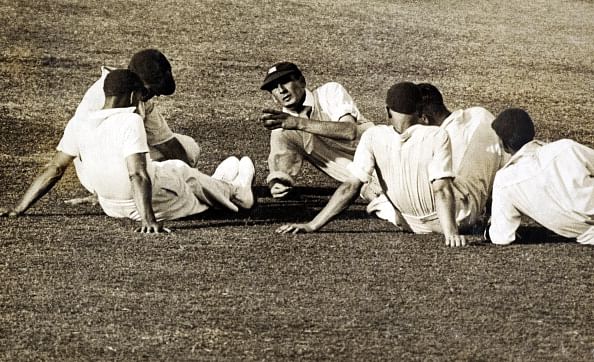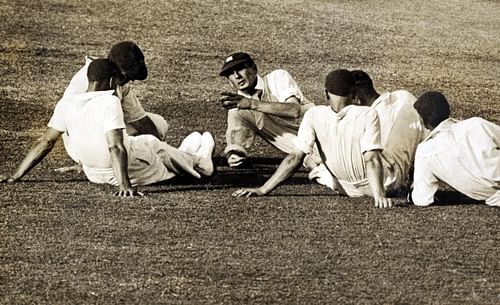
Classic Ashes Series: Bodyline 1932-33

England captain Douglas Jardine making a point to his players following the fall of an Australian wicket during the 1st Test match in the infamous Bodyline series at the Sydney Cricket Ground, 2nd December 1932. England won by 10 wickets. (
Adelaide, January 1933: England’s tour manager Pelham Warner pays a visit to the Australian players’ dressing room with the intention of apologising to the Australian captain, Bill Woodfull, for the injuries received when he was struck repeatedly by English pace man, Harold Larwood.
“I don’t want to see you, Mr Warner,” Woodfull reportedly said. “There are two teams out there. One is trying to play cricket, one is not.”
This was the third test of the infamous Bodyline series and the one in which the style of bowling, called leg theory, really made an impact. Interestingly, Larwood wasn’t actually bowling leg theory when Woodfull was hit and Bert Oldfield, who had his skull fractured in that same Test, always admitted that the injury was as much to do with his poor attempt to hit the ball as anything.
None of this has stopped Bodyline from becoming a legend.
The series took place in the Australian summer of 1932-33 and was characterised by England’s pure determination to win back the urn. Not for the first or last time in cricket history, the Australian team of the 1930s had a formidable batting line up, which included such names as Bill Woodfull, Stan McCabe, Bill Ponsford and, of course, Donald Bradman.
Although Bradman’s first series for Australia ended in a comprehensive 4-0 victory for England. On the return tour to England in 1930, he had matured and gained more experience and it showed. Bradman made double centuries at the Oval and at Lord’s, and the infamous 334 in the third test at Headingley.
With the prospect of a tour Down Under with Australia’s already impressive batting line up as well as this enigma that was Bradman, England knew they would need something special. They found that something in leg theory bowling, or Bodyline as it became known.
Bodyline was not just a style of bowling, but a combination of a certain style of bowling and certain field placements which together made it difficult for the batter to score. In short, the ball would be bowled so that it pitched short down the leg side and rose up at the batsman. The fielders were stacked behind the wicket and on the leg side with a view to taking a catch as the batter tried to defend himself from the ball. Add this tactic to a bowler like Larwood, who was devastatingly fast, and the often unpredictable Australian pitches, the English team had one hell of a weapon.